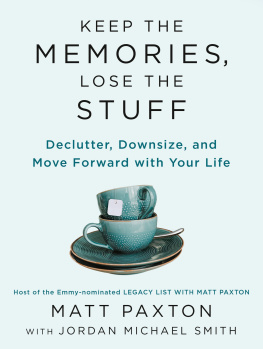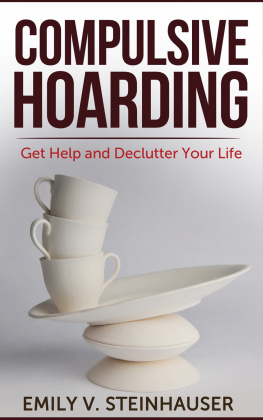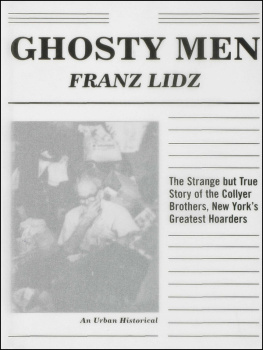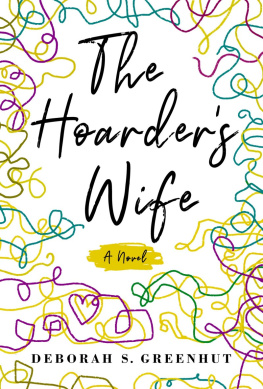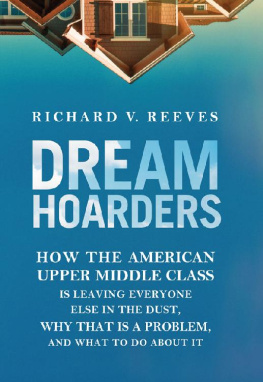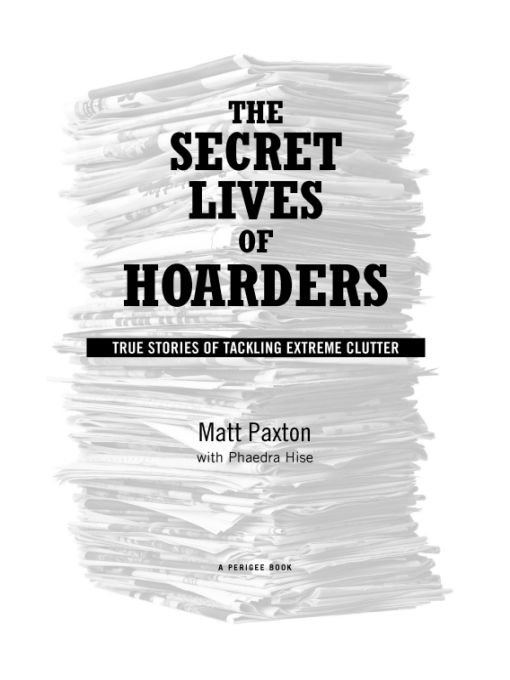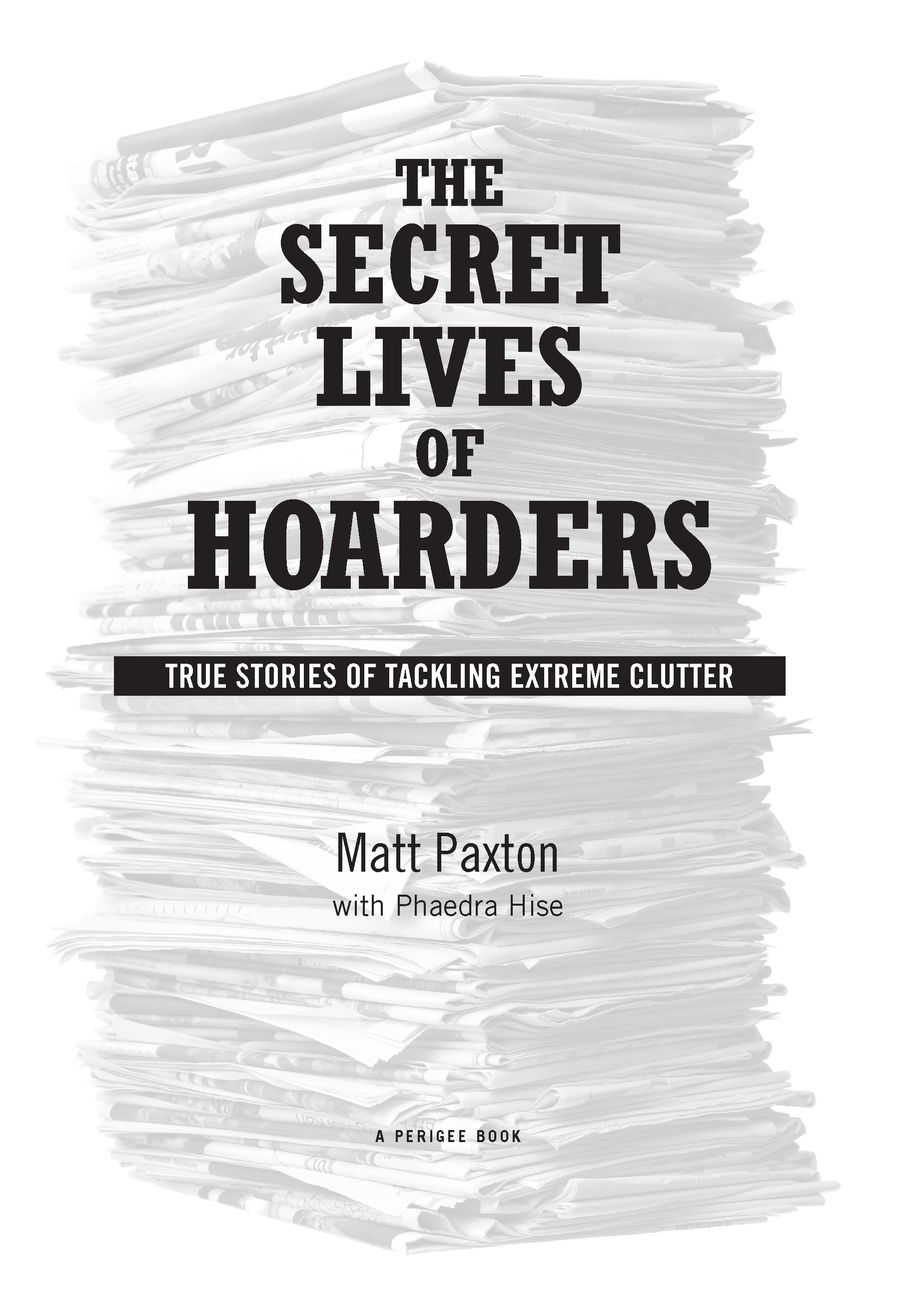Table of Contents
I dedicate this book to my wife, Sarah. Very simply, you are everything to me. Thank you for falling in love with a penniless trash man who said he was writing a book. You are an amazing mother and wife and you are gorgeous. I love you. Matt
For Lily, my junior hoarder.
Phaedra
FOREWORD
Compulsive hoarding is more than just a hot topic in the media today. It is a long-neglected disorder that plagues millions of people. It is manifested in multiple forms, from hoarding dolls to animals to food, and has multiple causes and outcomes. Hoarding is complex and frustrating for everyone it affects, and it takes away human potential for a safer and more rewarding life.
Hoarding is not a private concern. It affects husbands, wives, companions, parents, children, best friends, neighbors, and animals. It sometimes involves expensive public services, such as code enforcement, fire and emergency services, disability benefits, and legal resources: all supported directly or indirectly by public funds. We are all touched in some way by this growing problem.
Hoarding tendencies often get worse after a traumatic event, and without intercession mild hoarding becomes more severe; it is just a matter of time. Unless someone reaches out to the hoarder, the disorder continues to grow like bacteria in a weakened body. Treating compulsive hoarding is a unique challenge. Unlike other addictions such as using drugs or alcohol, acquiring and keeping objects are behaviors necessary to maintain daily life. It can be difficult to determine when that normal behavior crosses the line into hoarding.
Families of hoarders are often asked, Why didnt you do something to stop this? or, How could you allow your loved one to live this way? Usually the truth is that they tried and were shut out, sometimes permanently exiled from the hoarders house. Hoarders often feel threatened, unloved, harassed, and misunderstood; family members feel rejected, ignored, or scolded; neighbors feel annoyed, unsafe, and alarmed. Nobody seems to know what to do.
The Secret Lives of Hoarders is a compelling and compassionate guide to this disorder. Matt Paxton brings understanding and empathy to hoarders and their families who are fighting the battle against clutter, and he knows what it takes to minimize its assault on human life. He is a person of heart and practicality who knows how to reach hoarders and their families. He has learned how to involve public, community, and professional services. He recognizes that hoarders are often victims of an internal process that leaves them helpless when they dont have the benefit of involvement from professionals and a loving, supportive family. He understands the characteristics that hoarders have in common as well as the features that make each case unique. He also knows that, in rare cases, hoarders should be left to live out their lives without interventionof course, only when health and safety are not an issue.
Matt goes where most people do not dare: inside hoarders homes. He doesnt shy away from houses defined by squalor and dangerous conditions; rooms filled with rodentinfested debris and no escape from fire; health hazards and falling mounds of clutter; homes that speak volumes of human suffering. There is no direct and simple path to recovery, yet Matt is able to define a process based on his intimate and direct knowledge of a disorder that he has embraced professionally for many years.
In this book you will learn more about hoarding than you would from a professional journal article or scholarly thesis. You will see every aspect of this disorder and its remedies addressed not only from inside the hoarders world, but also from the point of view of those that hoarding affects.
Matt directly deals with issues about every aspect of hoarding, focusing on real stories that qualify the negative stereotypes and prejudices about people who hoard, and he helps us see that the tentacles of hoarding reach far beyond the person who hoards. It is a societal problem, more so than many other psychological conditions. He takes the sensationalism out of hoarding so that it can be discussed as meaningfully as depression or anxiety. The more we can talk about hoarding in an informed way, the more we can unite resources to remediate it.
Matt writes with concern about the life inside a hoarders home. He describes the entire spectrum of issues, from what happens in a hoarders mind to what society can do to help. Inside every hoarder is a person waiting to be released, and this book can be the first step in handling a potentially dangerous disorder from which people lose their lives and society loses valuable human resources. After reading this book, people can look directly at the sad reality of a hoarder who previously mystified, angered, and frightened them. In The Secret Lives of Hoarders, Matt is inviting us to embrace hope, join hands, and get the work done.
Suzanne Chabaud, PhD
Clinical Psychologist
Founder of the Obsessive-Compulsive Disorder
Institute of Greater New Orleans
INTRODUCTION
It was the summer of 2006 and I was desperate for work. I was living in Richmond, Virginia, and sleeping on a buddys couch after a few adventures with jobs that went bad and an attempt to start my own business that failed. I consider myself to be a hard worker and usually have great ideas, but this time I just didnt know what to do.
I decided to try to pick up a few cleaning jobs to earn enough money to help my buddy pay rent. I printed up some flyers and stuck them in mailboxes in an upscale neighborhood, and the next day I got a phone call. An older couple wanted me to empty out their sons house and organize an estate sale. The son, Timothy, had died recently, and they said there was just too much stuff for them to handle.
I agreed to a price of a few hundred dollars. If I had had any inkling what I was heading into, I would have charged thousands. I had cleaned houses before, mostly helping my grandmother and aunts, and I wasnt afraid of mess. But this guy had been collecting things for decades. When his parents showed me into the house, I was overwhelmed by the sheer volume of clutter. Every room had stacks of dustcovered boxes, bags, and cartons piled up to six feet high. Narrow, dark corridors snaked between the walls of stuffI had to turn sideways to get through some of the tight spots.
On my second day of trying to pull items out of the house to sort and price for the sale, I realized I was in over my head. I called my buddys brother, Colin, and asked him to help. We needed a truck, so he grabbed another friend who had one. Both of them were still in high school so we were only working late afternoons and weekends. It took us three weeks to finally empty out that house.
Although Timothy had the most cluttered house I had ever seen, the stuff that hed collected showed that he had a lot of interests, ranging from music to German toy trains to antique furniture. Evidently he went through periods of collecting each one of those, which we could tell by the layers of stuff and the dates on the letters and magazines in the layers. It was like being on an archaeological dig. We could tell that from 1975 to 1980 he was into high-end stereo equipment and vinyl recordings. Then, from 1980 to 1984, he slowed down and was mainly hanging on to mail and magazines. He started saving musical instruments around 1985, and then a few years later added the trains. He collected board games too.


